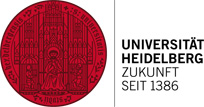How Blood Vessels Are Formed
15 September 2017
New insights into the development of the vascular system: researchers in the team of Dr Carmen Ruiz de Almodóvar of the Heidelberg University Biochemistry Center have discovered a crucial biological step that regulates the formation of blood vessels. They were able to show that the proteins YAP and TAZ play an important role in this process. The new findings were published in the journal “Developmental Cell”.
Endothelial cells form the inner lining of blood vessels. During embryonic development, these cells begin to assemble and grow into vessels. Genetic dysfunction of YAP and TAZ specifically in endothelial cells results in severe vascular defects right up to the death of the embryo, as shown by the postdoctoral researcher Dr Xiaohong Wang, who works in the team of Dr Ruiz de Almodóvar.
YAP and TAZ are the effectors of the Hippo signalling pathway, which has been identified as a central regulator of organ size and tumour growth. As co-transcription factors, the two proteins bind to certain transcription factors to regulate gene transcription, the process by which genetic information is copied from DNA to RNA to ultimately result in specific protein formation. In order to do this, YAP and TAZ must be activated and move to the cell nucleus.
As the Heidelberg scientists discovered, the “Vascular Endothelial Growth Factor” (VEGF) – a key factor for the growth and development of blood vessels – is a major activator for YAP and TAZ in endothelial cells. The researchers examined the process of vascularisation of the central nervous system in mice. “If YAP and TAZ are missing, the endothelial cells will not react to the VEGF signal, preventing correct blood vessel formation,” explains Dr Ruiz de Almodóvar.
The findings of this basic research could provide new ways of treating diseases that involve a dysfunctional formation of blood vessels.

